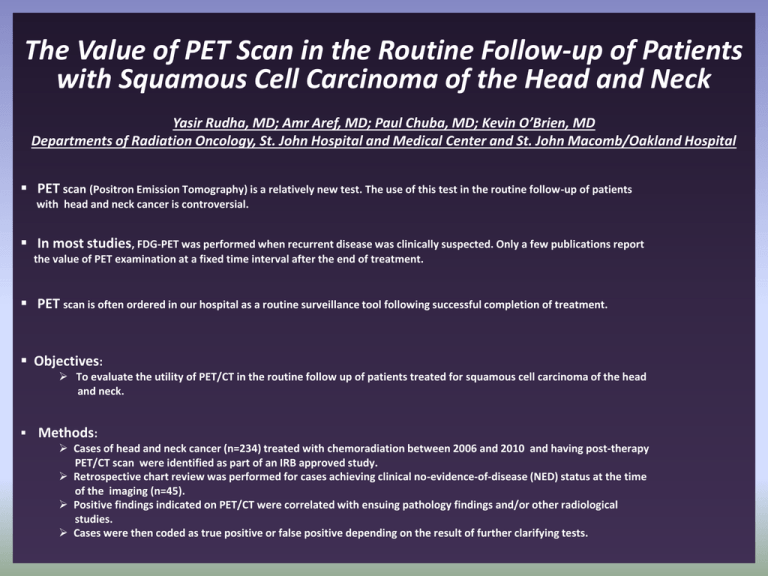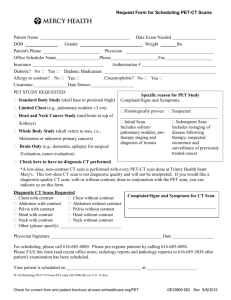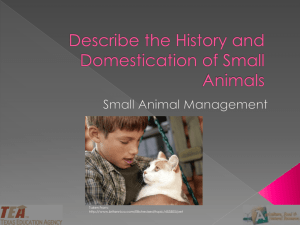The Value of PET Scan in the Routine Follow
advertisement

The Value of PET Scan in the Routine Follow-up of Patients with Squamous Cell Carcinoma of the Head and Neck Yasir Rudha, MD; Amr Aref, MD; Paul Chuba, MD; Kevin O’Brien, MD Departments of Radiation Oncology, St. John Hospital and Medical Center and St. John Macomb/Oakland Hospital PET scan (Positron Emission Tomography) is a relatively new test. The use of this test in the routine follow-up of patients with head and neck cancer is controversial. In most studies, FDG-PET was performed when recurrent disease was clinically suspected. Only a few publications report the value of PET examination at a fixed time interval after the end of treatment. PET scan is often ordered in our hospital as a routine surveillance tool following successful completion of treatment. Objectives: To evaluate the utility of PET/CT in the routine follow up of patients treated for squamous cell carcinoma of the head and neck. Methods: Cases of head and neck cancer (n=234) treated with chemoradiation between 2006 and 2010 and having post-therapy PET/CT scan were identified as part of an IRB approved study. Retrospective chart review was performed for cases achieving clinical no-evidence-of-disease (NED) status at the time of the imaging (n=45). Positive findings indicated on PET/CT were correlated with ensuing pathology findings and/or other radiological studies. Cases were then coded as true positive or false positive depending on the result of further clarifying tests. Results Post-therapy PET/CT identified 15 patients with abnormality requiring further evaluation. Of these, eight cases (53%) were proven to have malignancy based on biopsy findings. Six out of 8 cases showed occult persistent disease at the primary site. One additional case was diagnosed with regional lymph node recurrence. And in one case a colon cancer was identified. All patients who had negative PET/CT scan remained free from local-regional relapse at the time of last follow up. In the remaining seven cases, imaging findings were shown to represent false positive results with unnecessary work-up and/or biopsy evaluation. Hence for this population the true positive rate for routine PET/CT surveillance in head and neck cancer patients is estimated as 8/15 = 53% and the false positive rate as 7/15 = 46%. Patient with Squamous Cell Carcinoma of Head and Neck Treatment NED in 1st Follow-up visit Routine PET/CT scan Results 66% No effect on the plan of management 34% Affect the plan of management 53.3% True Positive 46.7% False Positive Conclusions The routine use of PET/CT scan in the follow up of patients with squamous cell carcinoma of the head and neck may be useful for the detection of local-regional recurrences before they become clinically apparent. This in turn may improve the outcome of salvage therapy. The routine use of PET scan however is associated with a high false positive rate. This should be considered when ordering radiological exams and biopsies. A negative post therapy PET scan appears to be an excellent predictor of freedom from future loco-regional recurrence This study can impact the care of patients as : This result provides a further support for the routine use of PET scan as a surveillance method following treatment of head and neck cancer patient.





